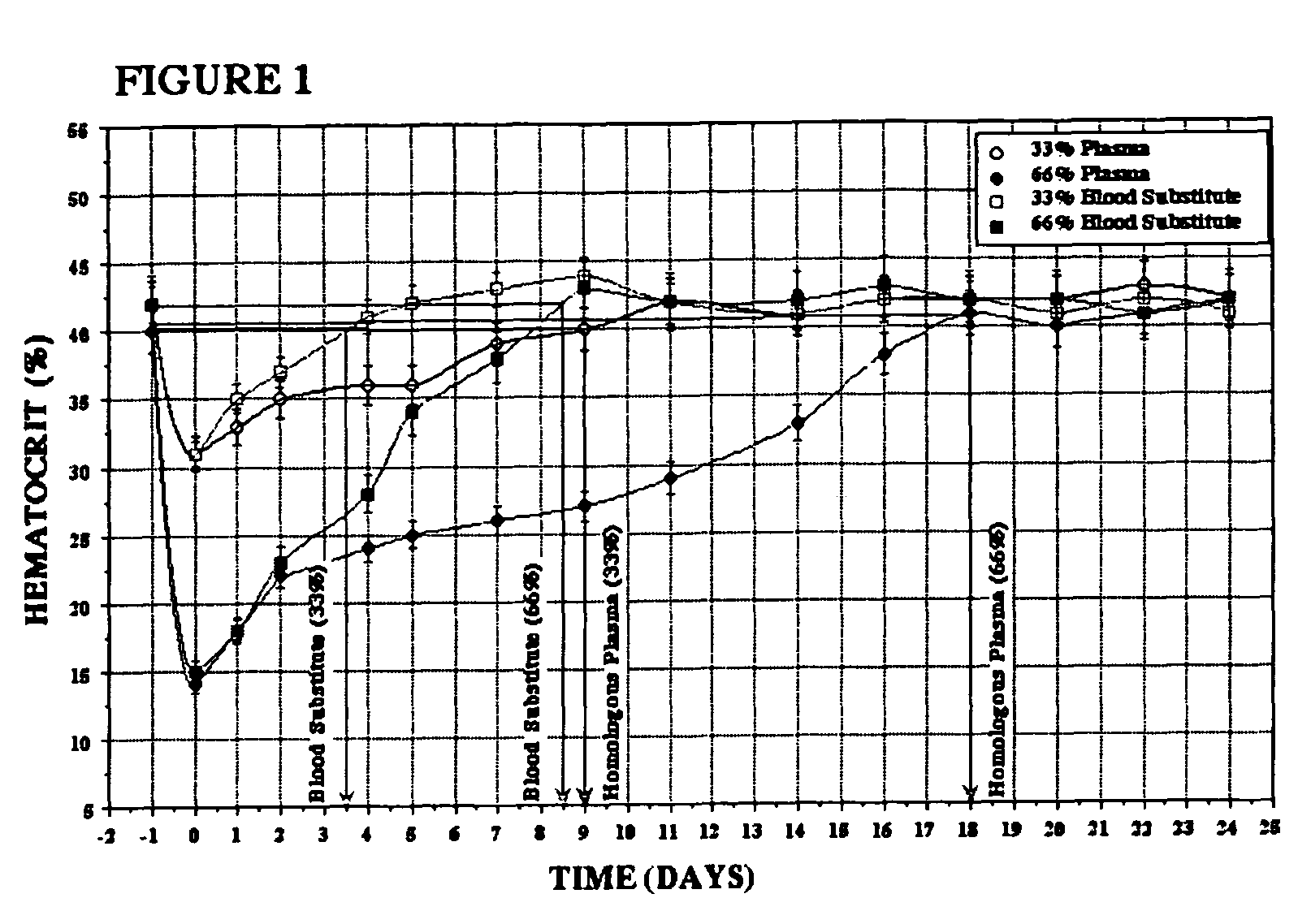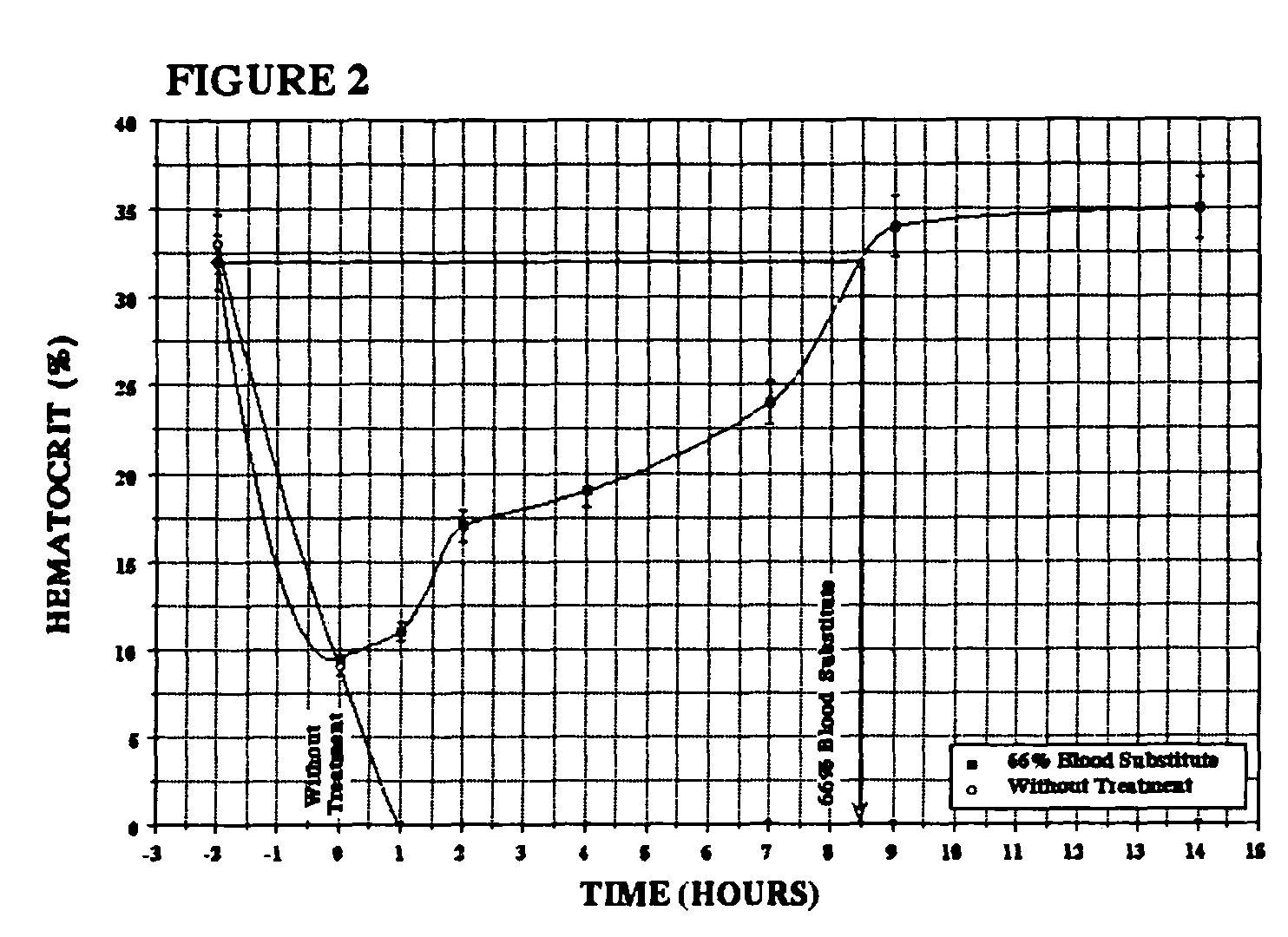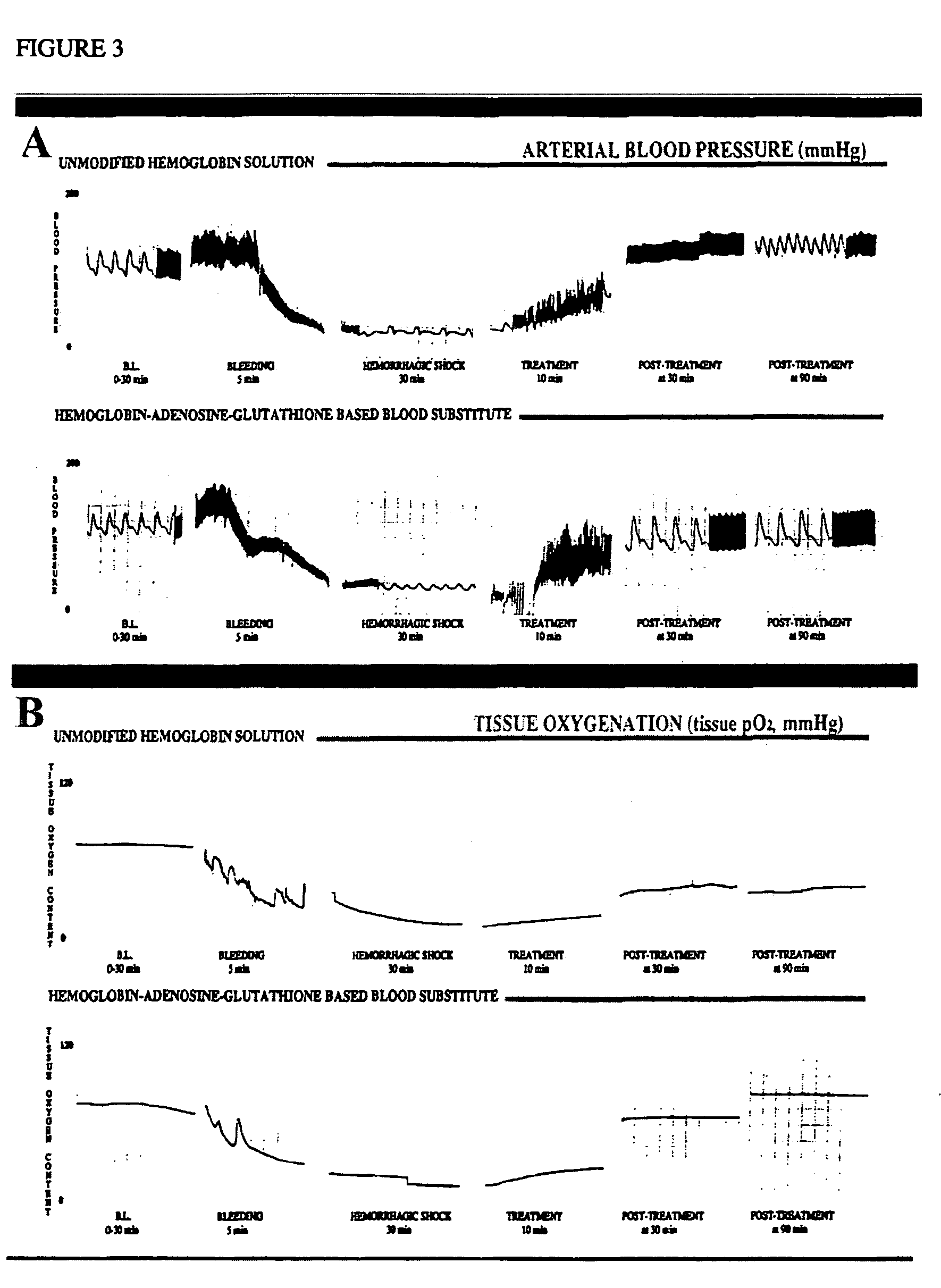Methods of treating acute blood loss
a technology of acute blood loss and treatment methods, applied in the direction of drug compositions, peptide/protein ingredients, extracellular fluid disorders, etc., can solve the problems of immunological components, risk of triggering many complications, and compromising the body's ability to replenish its own red blood cells
- Summary
- Abstract
- Description
- Claims
- Application Information
AI Technical Summary
Benefits of technology
Problems solved by technology
Method used
Image
Examples
Embodiment Construction
[0104]The present invention relates to novel methods for treating or preventing acute blood loss, preferably, acute blood loss anemia, or more preferably, anemia caused by (i) acute blood loss due to an illness, (ii) acute blood loss that occurs during surgery, or (iii) acute blood loss from trauma. The methods of the present invention comprise administering to subjects in need thereof a blood substitute in an amount effective to elevate blood volume and counter hypoxia associated with the acute blood loss, which blood substitute induces erythropoiesis under normoxic conditions. More particularly, the blood substitutes useful for the methods of the present invention are capable of (1) inducing expression of erythropoietin as tested in a cell culture under normoxic conditions, and / or (2) inducing erythropoiesis under normoxic conditions as measured by (a) a decrease in the doubling time of the subject's hematocrit or hemoglobin, or (b) an increase in the subject's circulating erythro...
PUM
| Property | Measurement | Unit |
|---|---|---|
| circulatory retention time | aaaaa | aaaaa |
| weight | aaaaa | aaaaa |
| body weight | aaaaa | aaaaa |
Abstract
Description
Claims
Application Information
 Login to View More
Login to View More - R&D
- Intellectual Property
- Life Sciences
- Materials
- Tech Scout
- Unparalleled Data Quality
- Higher Quality Content
- 60% Fewer Hallucinations
Browse by: Latest US Patents, China's latest patents, Technical Efficacy Thesaurus, Application Domain, Technology Topic, Popular Technical Reports.
© 2025 PatSnap. All rights reserved.Legal|Privacy policy|Modern Slavery Act Transparency Statement|Sitemap|About US| Contact US: help@patsnap.com



